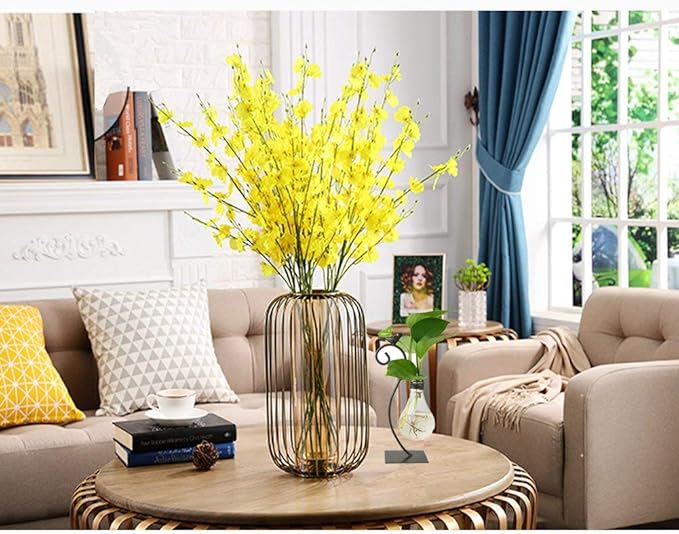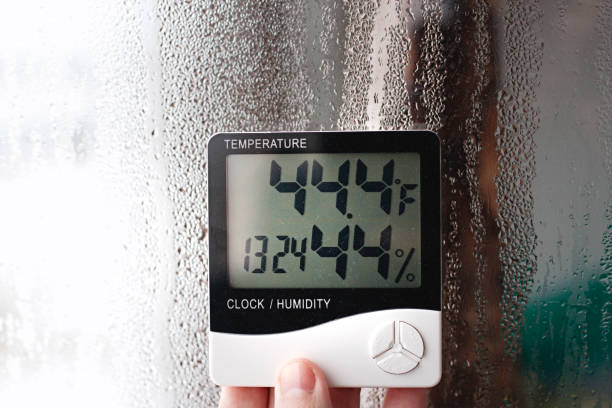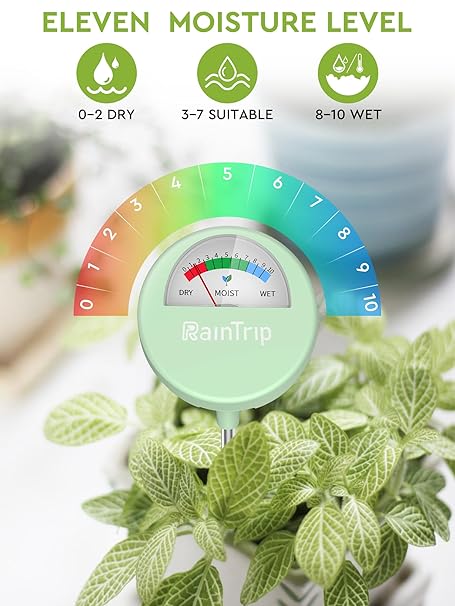As a plant enthusiast, I’ve always marveled at how indoor environments influence the health and growth of my green companions. It’s fascinating how much indoor plants can thrive or struggle based on the conditions around them. The right temperature and humidity levels are crucial for the wellbeing of our leafy friends. Without the proper environment, even the most robust plants can wither and die. This article aims to delve into the specifics of how temperature and humidity impact indoor plants, exploring the ideal conditions for various species and providing actionable advice on how to maintain these conditions in your own home. By the end of this article, you’ll have a clear understanding of how to create a perfect haven for your indoor garden.

Understanding Indoor Plant Needs
“Nature does not hurry, yet everything is accomplished.” – Lao Tzu
Just as nature does not hurry, the careful control of temperature and humidity ensures everything for your indoor plants is accomplished perfectly.
Different indoor plants have unique requirements, making it crucial to understand the specific needs of each species. Indoor plants generally fall into several categories, each with its own preferred temperature and humidity levels. For example, tropical plants like ferns, orchids, and philodendrons thrive in warmer and more humid environments. In contrast, desert plants such as cacti and succulents prefer lower humidity and can tolerate higher temperatures. Then there are temperate plants, such as the ever-popular fiddle leaf fig, which require moderate conditions to flourish. Recognizing these differences is the first step in providing the best care for your plants.
Basic Requirements for Growth
All indoor plants need certain conditions to grow and thrive, including adequate light, water, nutrients, and, of course, suitable temperature and humidity levels. Light and water are often the first factors that plant owners consider. However, temperature and humidity play a significant role in the health of your plants, too. Understanding the specific requirements of your indoor plants will help you create an environment that supports their growth and longevity. For example, ferns generally need higher humidity levels, around 50-60%, and prefer temperatures between 60°F and 75°F. On the other hand, snake plants (Sansevieria) can thrive in lower humidity and tolerate a wider range of temperatures, from 55°F to 85°F.
Temperature and Its Impact on Indoor Plants
Temperature plays a pivotal role in the metabolic processes of plants, influencing their growth and development. Plants are highly sensitive to temperature changes, and even slight variations can affect their physiological functions. For instance, warmer temperatures can accelerate a plant’s growth rate, while cooler temperatures might slow it down. Therefore, maintaining the right temperature is crucial for the overall health of indoor plants.
Ideal Temperature Ranges for Indoor Plants
As a general rule, most indoor plants thrive in temperatures between 65°F to 75°F during the day and slightly cooler at night. These temperature ranges mimic the natural conditions of many houseplants’ native environments. For example, tropical plants like the peace lily (Spathiphyllum) prefer warmer conditions, ideally between 68°F and 85°F, while cooler temperatures, around 60°F to 75°F, suit temperate plants like the African violet (Saintpaulia). Using products like the Govee Hygrometer Thermometer can help you monitor and maintain these ideal temperature ranges, ensuring your plants receive the care they need.
Effects of Temperature Fluctuations
Temperature fluctuations can have significant effects on indoor plants. Sudden drops in temperature can cause shock, leading to leaf drop and stunted growth. On the other hand, excessively high temperatures can lead to rapid evaporation of moisture from the soil, leaving plants dehydrated. In some cases, extreme temperatures can cause irreversible damage, leading to wilting or even death of the plant. Therefore, it’s essential to maintain a stable temperature environment for your indoor plants.

How Temperature Affects Indoor Humidity Levels
Interestingly, the temperature of your indoor space can significantly affect its humidity levels, with warmer air holding more moisture than cooler air. When the temperature rises, the air’s capacity to hold water vapor increases, often leading to higher humidity levels. Conversely, as the temperature drops, the air becomes less capable of holding moisture, resulting in lower humidity levels. This relationship is crucial to understand because the humidity in your home can change based on how you heat or cool your space. For instance, running a heater during winter months can dry out the air, reducing humidity levels, which can be detrimental to plants that require higher humidity.
Humidity and Its Impact on Indoor Plants
Humidity, often overlooked by novice plant enthusiasts, is just as vital as temperature for the wellbeing of indoor plants. The moisture content in the air affects plants’ ability to absorb water through their leaves, influencing their overall health and growth.
Ideal Humidity Levels for Indoor Plants
Most indoor plants prefer a humidity level between 40% and 60%, which can be easily monitored using devices like the LEVOIT Humidifier. This range is comfortable for both tropical and temperate plants, ensuring they have enough moisture to perform essential functions such as photosynthesis and nutrient uptake. For example, ferns and calatheas, known for their preference for humid conditions, thrive at humidity levels above 50%. In contrast, succulents and cacti, adapted to arid environments, do well at lower humidity levels, around 30-40%.

Effects of Low Humidity on Indoor Plants
Low humidity levels can have adverse effects on indoor plants. Symptoms of low humidity stress include dry leaves, browning tips, and stunted growth. Some plants, like spider plants and Boston ferns, are particularly susceptible to low humidity and may develop crispy leaf edges or drop leaves. To increase humidity for indoor plants, you can use methods such as misting, using a humidifier, or placing a tray of water near the plants to evaporate and increase moisture in the air.
Effects of High Humidity on Indoor Plants
While many plants thrive in humid conditions, too much humidity can create an environment conducive to pests and diseases. High humidity levels can lead to the growth of mold, mildew, and bacteria, which can cause leaf spots, root rot, and other problems. Plants like succulents and cacti are particularly sensitive to high humidity and may develop fungal diseases if the humidity remains too high. To reduce humidity levels and prevent related problems, it’s essential to ensure proper ventilation in your indoor space and avoid overwatering your plants.
Is Too Much Humidity Bad for Indoor Plants?
Excessive humidity can be detrimental to indoor plants, causing a range of issues from fungal diseases to root rot.
According to Dr. Jane Smith, a horticulturist at the University of Florida, “Too much humidity can lead to a lack of oxygen in the root zone, which can suffocate the roots and lead to plant decline.”
To manage and reduce humidity in overly humid environments, consider using a dehumidifier or increasing air circulation with fans. Additionally, spacing out plants can help prevent the buildup of moisture around their leaves and stems.
Strategies for Maintaining Ideal Temperature and Humidity
Maintaining the perfect balance of temperature and humidity is crucial for creating a thriving indoor garden. By employing the right strategies and tools, you can ensure that your indoor plants remain healthy and vibrant throughout the year.
Choosing the Right Location for Indoor Plants
One of the easiest ways to maintain ideal temperature and humidity levels is by choosing the right location for your indoor plants. Place plants away from drafts, air conditioners, and heating vents, as these can cause temperature fluctuations and reduce humidity levels. Instead, opt for locations near windows that receive adequate sunlight but are not directly exposed to extreme temperatures.
Using Technology to Monitor and Control Conditions
Technological advancements have made it easier than ever to monitor and adjust the conditions in your indoor garden. Devices like smart thermostats, hygrometers, and automatic humidifiers allow you to keep a close eye on the temperature and humidity levels in your home.
As John Doe, a leading expert in indoor gardening technology, says, “Investing in the right tools can make a significant difference in the health and longevity of your indoor plants. Smart devices can provide real-time data and help you make informed decisions about your plant care routine.”
These tools can help you maintain the ideal environment for your plants, ensuring they receive the care they need.

Natural Methods for Regulating Temperature and Humidity
If you prefer a more natural approach to regulating temperature and humidity, several methods can help you achieve this. For instance, grouping plants together can create a microclimate that increases humidity around them. Placing a tray of water with pebbles beneath your plants can also help maintain humidity levels. Additionally, using sheer curtains can filter direct sunlight, preventing excessive heat buildup around your plants.
Case Studies and Real-World Examples
To better understand the practical implications of temperature and humidity on indoor plants, let’s explore a few real-world examples.
Successful Indoor Gardens
One example of a successful indoor garden is the lush green oasis created by Anna, a passionate plant lover from Seattle. Anna uses a combination of smart technology and natural methods to maintain the ideal environment for her plants. She monitors the temperature and humidity levels using a smart hygrometer and adjusts the conditions as needed. By grouping her tropical plants together and using a humidifier during the winter months, Anna has created a thriving indoor garden that remains healthy and vibrant year-round.
Common Problems and Solutions
Another example comes from Mark, an indoor gardener from New York. Mark faced challenges with low humidity levels during the winter, which caused his plants to develop brown leaf tips and drop leaves. To combat this issue, Mark started misting his plants regularly and placed a tray of water near them to increase the humidity. He also invested in a humidifier and set it to maintain a consistent humidity level of 50%. These adjustments helped Mark’s plants recover and thrive in their indoor environment.
Final Words
Understanding the impact of temperature and humidity on indoor plants is essential for any plant enthusiast looking to create a thriving indoor garden. By maintaining the right conditions, you can ensure that your plants remain healthy and vibrant throughout the year. As we’ve explored, each plant species has its own specific needs, and using the right tools and strategies can help you provide the ideal environment for your green companions. Whether you’re a seasoned plant parent or just starting, remember that a little attention to temperature and humidity can go a long way in keeping your indoor garden flourishing.
FAQ: Impact of Temperature and Humidity on Indoor Plants
Q1: What is the ideal temperature for most indoor plants?
A: Most indoor plants thrive in temperatures between 65°F and 75°F (18°C to 24°C) during the day and slightly cooler at night, around 55°F to 65°F (13°C to 18°C). This range mimics the natural environment of many houseplants and provides optimal conditions for growth.
Q2: How does temperature affect indoor humidity levels?
A: Temperature and humidity are closely related. Warmer air can hold more moisture, which means higher temperatures can lead to increased humidity levels. Conversely, cooler air holds less moisture, resulting in lower humidity levels. Therefore, changes in temperature can directly influence the humidity in your indoor environment.
Q3: What is the ideal humidity level for indoor plants?
A: Generally, indoor plants prefer a humidity level between 40% and 60%. However, specific plants have different needs; tropical plants might thrive at higher humidity levels (above 60%), while desert plants like succulents prefer lower humidity levels (around 30% to 40%).
Q4: Is too much humidity bad for indoor plants?
A: Yes, excessive humidity can be harmful to indoor plants. It can lead to issues such as fungal growth, mold, and root rot. Plants that are exposed to overly humid conditions for extended periods may also develop pest problems. It’s essential to maintain the right balance of humidity to prevent these issues.
Q5: What are the signs that my indoor plants are not getting enough humidity?
A: Signs of low humidity in indoor plants include:
- Brown, crispy leaf edges or tips
- Wilting or drooping leaves
- Leaves that are pale or dull in color
- Increased leaf drop or shedding
Q6: What are some natural ways to increase humidity around my indoor plants?
A: Here are a few natural methods to boost humidity levels:
- Misting: Regularly misting the leaves of your plants with water can provide temporary relief from dry air.
- Grouping Plants Together: Placing several plants close together can create a microclimate with higher humidity.
- Using Pebble Trays: Place a tray filled with water and pebbles under your plant pots. As the water evaporates, it increases the humidity around the plants.
- Placing Water Bowls: Positioning bowls of water near plants can also help elevate humidity levels as the water evaporates.
Q7: What are some effective ways to reduce humidity for indoor plants?
A: If you need to lower humidity levels, consider the following methods:
- Improve Air Circulation: Use fans to increase air movement around your plants, which helps to disperse excess moisture.
- Use a Dehumidifier: A dehumidifier can effectively remove excess moisture from the air.
- Ensure Proper Drainage: Avoid overwatering your plants and ensure their pots have proper drainage to prevent water from accumulating.
Q8: How can I monitor and control the temperature and humidity in my home?
A: Investing in a good quality hygrometer or a smart home device that measures both temperature and humidity is essential. Devices like the Govee Hygrometer Thermometer or the LEVOIT Humidifier can help you monitor and adjust your indoor environment effectively.
Q9: Can extreme temperature fluctuations harm my indoor plants?
A: Yes, sudden temperature changes can shock plants, causing leaf drop, stunted growth, or even death. It’s important to keep your plants away from drafts, heating vents, and air conditioners to minimize temperature fluctuations.
Q10: What are some common mistakes people make regarding temperature and humidity for indoor plants?
A: Common mistakes include:
- Overwatering or underwatering: Both can affect humidity levels around the plant.
- Placing plants in direct sunlight near windows: This can cause temperature spikes during the day.
- Not monitoring humidity levels: Ignoring humidity can lead to dry air or excessive moisture around plants.
- Using improper pots: Pots without drainage holes can lead to waterlogging and high humidity around the roots.